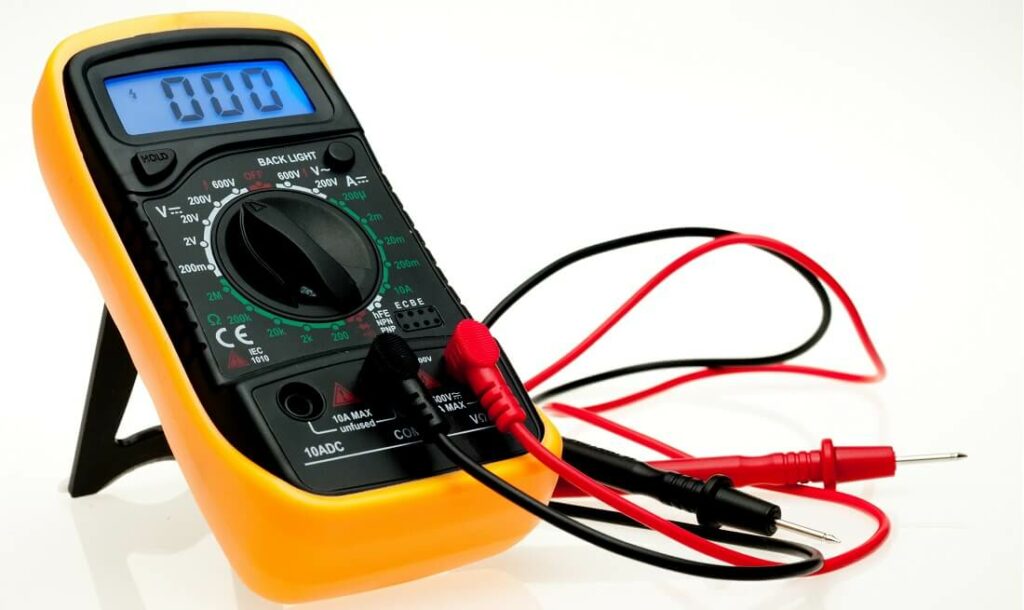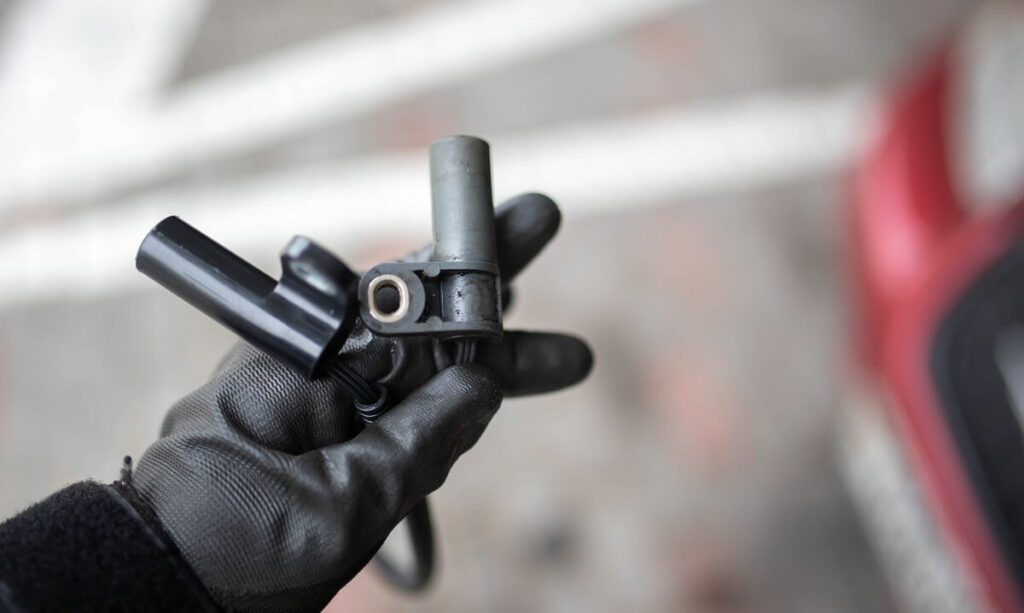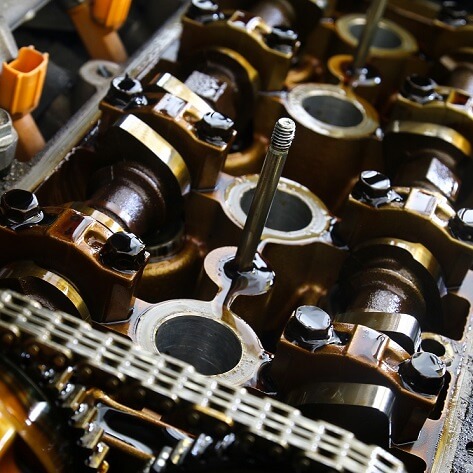The camshaft position sensor is located at the heart of your car’s engine, and serves a crucial purpose in the grand scheme of things. As the push for vehicles to become more automated continues to grow, sensors continue to grow in importance. It makes sense that we as car enthusiasts have to open our books once again to delve into the world of sensors, the camshaft sensor being our focus this time around.
In this guide, we will expand your knowledge of the camshaft sensor, and how to diagnose a bad one and how to fix the issue.
So let’s get into it.

What is a Camshaft Position Sensor?
A camshaft is a metal rod that converts rotational motion to linear motion. The timing chain/belt transfers energy from the driveshaft to the camshaft. The up-down movement of the cams on the shaft opens and closes the valves, allowing air in and exhaust gas out.
The camshaft position sensor collects information on the position of the camshaft. It sends this information to the ECU (engine control module), including ignition and fuel injection timing and whether the cylinder is on an intake or exhaust stroke. As a result, we have more efficient combustion, better fuel economy and an overall smoother running engines.
What Happens When a Camshaft Sensor Goes Out?
The camshaft sensor is vital for your car. It will please you to know that in most cases, camshaft sensor failures are not catastrophic and are quickly diagnosed. The sensor is also cheap to replace and an easy DIY job.
So what happens when this thing fails? For one, your engine’s main control unit loses one of the most critical pieces of live data — the position of the camshaft. As it turns out, the position of the cam is only a piece of a larger puzzle.
Most cars rely on the information collected from the camshaft position sensor, and the crankshaft position sensor to gain accurate data on the timing of the engine. When one of these goes out, there’s a decent chance that your motor won’t run anywhere near as smooth as it used to.
Speaking of which, let’s focus on the symptoms of a failed cam sensor and how they can affect your everyday commute.
What Are The Symptoms of a Faulty Camshaft Sensor?
A sensor can experience a lot of problems over its lifetime. Exposure to moisture, heat and mechanical and electrical damage can cause a sensor to fail. The camshaft sensor is more susceptible to wear and tear because of its proximity to the engine’s combustion chambers, so symptoms present quickly.
Car Not Starting
As a safety precaution, the ECU will prevent the engine from starting if it doesn’t receive a signal from the sensor. This software block prevents engine damage. It differs from vehicle to vehicle, but it might be the reason your car is not starting.
Limp Mode
Some cars go into limp mode. This mode limits the speed and locks the transmission to the low gears. Limp mode prevents engine damage but still allows you to move your car or drive a short distance to the mechanic.
Check Engine Light
The check engine light is the first symptom that something is wrong. This light doesn’t point right to a camshaft sensor failure, but it’s always a helpful signal to tell you to reach for your tools.
Engine Issues
The camshaft position sensor controls fuel and ignition timing, so if the sensor is malfunctioning, your engine might stall, lose power, or misfire. It can also cause excessive engine knock and rough idling that can damage your engine on top of poorer fuel economy.
Troubleshooting a Bad Camshaft Position Sensor
Now, this depends on whether your car is SOHC (Single overhead cam) or DOHC (Dual overhead cam). If your car uses a dual overhead cam, it uses two cam sensors, one for the cam that controls the exhaust valves and another for the one that controls the intake valves.
The sensor is usually located near the camshaft either on the top of the valve cover or near the side of the engine cylinders. With its position making it easily accessible, there are several ways you can troubleshoot a bad cam sensor.
ODB II Reader
Your ODB II reader should point straight to the issue that your car is experiencing. A sensor failure is easy to detect because it’s connected directly to the ECU.
A camshaft position sensor failure can point to a more serious issue, but even if that is the case, the reader will help you narrow it down.
The code is P0340. You can also clear the code with an ODB II reader when you replace the sensor. Sometimes you can swap out the sensor and start the car, but in most modern cars, the code needs to be cleared.
Multimeter Testing

First off, before disconnecting any fuse, relay, sensor, or connector, make sure your car is off. You might damage the ECU, a fuse, or a relay, so proceed at your own risk and only if you’re comfortable using a multimeter.
Disconnect the camshaft sensor. Inspect the sensor for any signs of damage. Any damage to the metal contacts, plastic, or melting is a direct sign that it’s time to replace your sensor.
Now, if there is no mechanical damage to the sensor, there can be internal damage. Connect your sensor back to the car and turn the key to the accessory position. Do not start your vehicle at this point.
Disconnect the wiring connector from the sensor, and Identify the correct wires. There are three wires that your sensor connector uses. Brown (ground or negative), green (positive power), and red (signal). Mind you, color coding could vary depending on your car’s manufacturer.
The idea is to use your multimeter probes and make sure that your power wire and signal wires are live. To do this, take your multimeter, set it to 20V and probe the wires. Your positive wire should show battery voltage while your signal wire should indicate around 5V.
To test whether the sensor is functioning like it should, turn the car off completely, connect the sensor (which you’ve previously dismounted from the engine), and turn the key back to the accessory position.
Next, use your multimeter probes to tap into signal voltage from the rear side of the connector. Now, use something metallic, like a wrench, and bring it close to the sensor. When you do, the voltage should drop from around 5V to 0V.
This indicates that your sensor is working fine. If you can’t find voltage on the signal side while the sensor is connected, or if it’s not showing any change in voltage when you put a metal object next to it, you’re likely looking at a bad sensor.
Oscilloscope
The oscilloscope is a useful tool to measure if electricity is being passed correctly through a system. Connect your oscilloscope to the sensor and turn the car on. A square wave should show up on the oscilloscope.
It will show you if your camshaft sensor is not opening or closing. It will also show you whether it is opening correctly because the signal will be inconsistent if it is not.
What Causes Camshaft Position Sensor to Fail?
Even though camshaft position sensors don’t fail that often, they aren’t impervious to wear and tear. In most cases, it’s bad wiring or thermal damage that causes these sensors to break.
Wiring Problems
Exposed wiring can cause issues, but you should breathe a sigh of relief if this is the problem. This is because a wiring harness is cheaper to replace than any other camshaft-related component.
Any damage, dirt, or oil can cause improper voltage flow from the battery to the sensor. Make sure your car is off before cleaning the wiring harness.
You can also tape any exposed wire with insulation tape as this will prevent voltage loss. This may not fix the issue if there is another break internally, but it’s a quick and reliable fix to get your car back on the road.
Thermal Damage
Heat and electronics rarely go well together. More often than not, frequent temperature cycles will render sensors useless given enough time. That being said, the camshaft position sensor is relatively robust compared to most other sensors in your car. Unfortunately, it can still be damaged by heat.
Battery Issues
Most cars will tell you when your battery is dead or even the health of your battery. Your car runs on a 12V system, and if it supplies that power incorrectly, or not at all, your camshaft sensor could malfunction.
Any corrosion on the battery means that it needs to go. You can test it with your multimeter by contacting the probes to the battery terminals. It should show about 12V when your car is on, and when your car starts it should not drop below 10V.
An alternator failure can also be a source of issues. It charges your battery using the engine’s power. Of course, your battery will not charge if it has failed, but if your battery is draining even after you have replaced it, it may mean that your alternator has failed.
Can I Drive With a Bad Camshaft Sensor?

In certain vehicles, you can drive with a bad camshaft sensor. It’s common for pre-2000s and early 2000s cars to not rely too much on sensors and electronics for essential functions.
However, it will be cheaper to replace a broken sensor than a broken camshaft, or a complete engine rebuild. It can also be a sign of other issues with your vehicle and by not replacing it, you are potentially ignoring something more serious.
How to Replace a Bad Camshaft Sensor?
If there’s any silver lining to dealing with cam sensor issues, it’s the fact that replacing one is often a very easy procedure. Since most of them are located somewhere near the valve cover, in many cases you’re looking at easy access and only one or two bolts holding the sensor in place.
Disconnect the connector, remove the bolts, extract the old sensor, install the new one and repeat the procedure in reverse. It really is that easy most of the time.
Get Quality Parts For Your Car
Car issues are never fun. We love to upgrade our cars and treat them well, but it’s never fun when we can’t take them for a spin. It is however a part of owning a car and by reading our guide, we hope that you’ll have your car back on the road soon.
Whether it’s a camshaft sensor or any other part you need, we at eEuroparts.com ® will supply it. Our easy-to-use website allows you to select your car and the components you need, taking you straight to it.



I am wanting a bolt that fastens the camshaft position sensor to the camshaft guide rail. /vehicle is 2008 VW new beetle, se contivertible A/T, PZEV